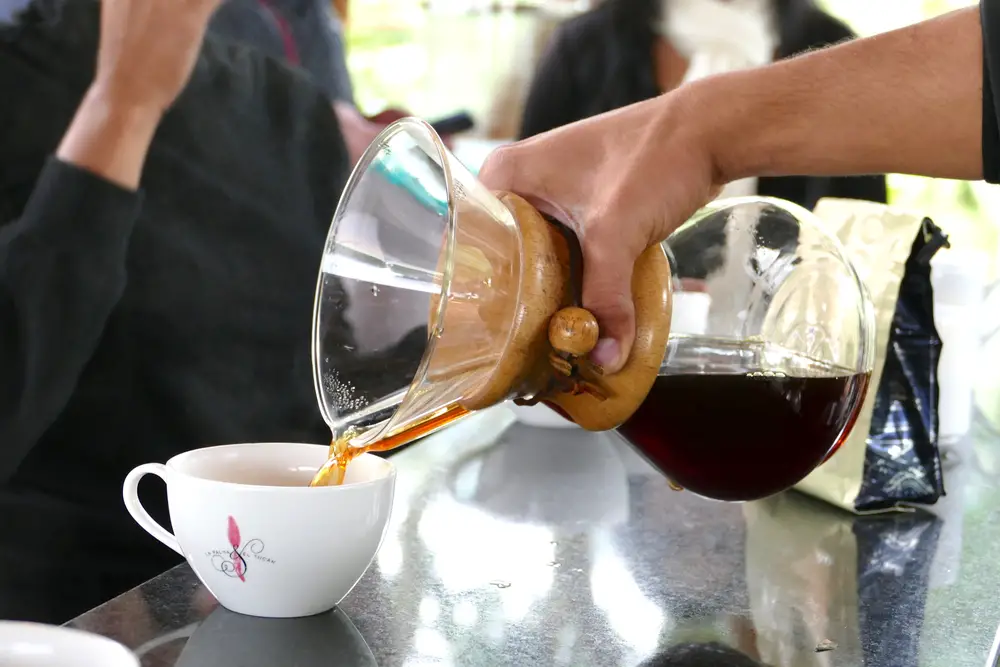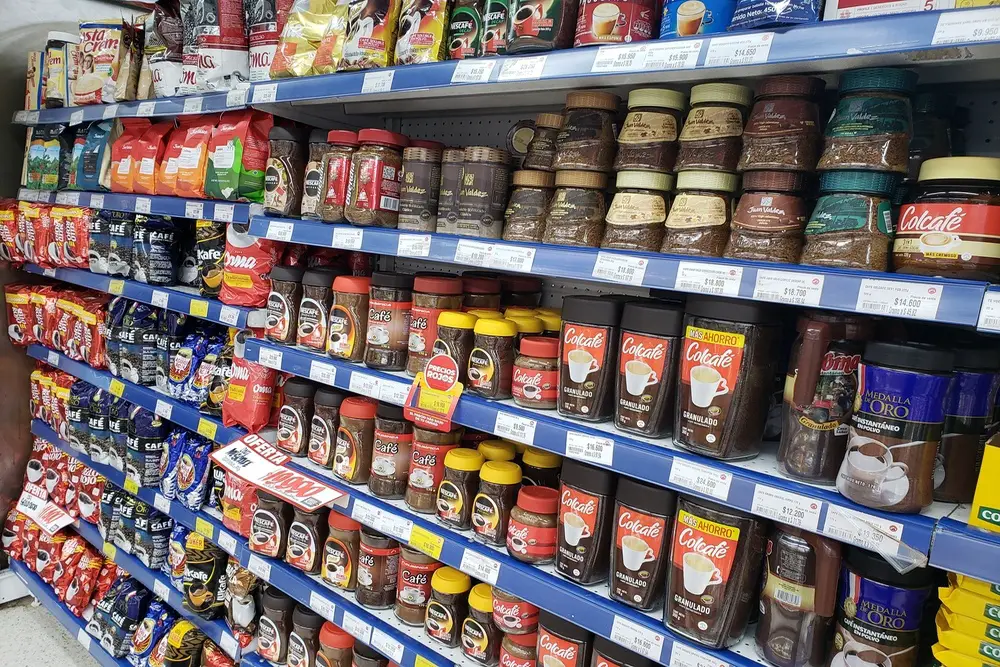In order to produce a differentiated coffee, new types of coffee were bred. One of them is Arara coffee, which originated in Brazil and has promising prospects.
Table of Contents
What is Arara coffee?
The Arara bean variety is the result of a natural crossbreeding in the field between individuals of the Obatã (Sarchimor X Catuai variety and yellow Icatu. Developed by technicians from the IBC and the Procafe Foundation studying its adaptation in a trial field at Capal, now Coopercitrus.
The first plants resulting from this cross were registered in the mid-1980s when some seedlings were selected for research and breeding of new generations. Up until the last two decades, this strain has been increasingly recorded in commercial plantings.
In the late 1990s and early 2000s, research interest in the Arara coffee variety increased. It has been studied and even been part of coffee improvement processes, as at the Procafe Foundation mentioned earlier.
The Catuaí coffee is currently the most grown coffee in Brazil. However, Arara coffee has started to stand out amid growers’ cultivation options and the introduction of new cultivation forms. The trend has been increasing since 2017.
According to Alegro, Arara coffee accounts for an estimated 50 to 60% of Arabica coffee plantations currently produced. In addition, an estimated 60 to 80 million seedlings were planted in Brazil for the 2020 harvest, i.e. plants in their early stages of development from germination to the development of the first leaves.
Characteristics of Arara coffee
The fruit of Arara coffee ripens late compared to other coffees, giving it more time to form the compounds responsible for its complex nuances and quality. However, varieties with different ripening times can be grown.
- Yellow cherries with large berries that have a higher market value.
- Sensory properties in the cup.
Benefits of Arara coffee
Small or compact trees that make harvesting easier
The trees or bushes of Arara coffee are more compact and have a larger diameter, which makes harvesting by hand or machine easier.
However, the coffee cherries that contain the beans have a stronger hold on the stem, so more force is needed to pick them. This in turn reduces fruit drop. The crop yield of Arara coffee is estimated to be 20% higher than other varieties.
The coffee beans of the Arara variety are larger. This results in the arara beans having a higher average weight than other varieties such as e.g. B. Catuaí.
High productivity
A special feature of the Arara coffee is the blossoming, which produces fruit on the old branches and thus contributes to a higher production. They have higher yield potential than other varieties; Reportedly up to 35% more compared to the Catuaí variety.
Adaptability and good resilience
Due to its resistance to some coffee diseases, this variety requires fewer crop protection products such as B. Fungicides. This makes it a good option or alternative for organic farming.
Natural disease resistance
This is one of the most important main characteristics of this coffee variety, because it is extremely resistant to important diseases such as coffee rust, Pseudomonas fruit and Phoma stain.
Quality of coffee from Arara beans
However, the quality of the drink and its taste do not depend solely on the variety. Arara coffee has excelled in international coffee competitions. It is one of the best to get high marks with good qualities of a clean and delicious drink.
Coffee grate
This fungus invades and infects the leaves of the coffee fruit and shoots. It mainly causes lesions on the leaves and affects the most important processes of the coffee plant, namely photosynthesis, respiration and transpiration. It affects production and is considered an epidemic in the regions of South America.
Phoma stain of coffee
It is a disease caused by fungi of the genus Phoma spp. is caused, hence the name. This fungus develops in leaf tissue without causing tissue death, but once it begins its weakening phase, it affects the stem and causes the plant to topple over.
Production and cultivation of Arara coffee
The growing conditions of this coffee are similar to those of other coffees, as it belongs to the varieties of Coffea belongs to Arabica.
- Temperature: The climate must have mild to mild temperatures between 19ºC and 22ºC, which corresponds to the coffee-growing regions of Brazil.
- Height: Cultivation takes place between 600 m above sea level. and 1,300 m above sea level.
- Rainfall: Annual rainfall in these regions varies between 1,200 mm and 1,600 mm per year. It is fully suitable for coffee plantations and widely used in Brazilian coffee plantations.
The productivity of Arara coffee in Brazil is very high and among the highest yielding among commercial varieties in Brazil. Average production figures are usually between 40 and 60 bags/hectare, i.e. up to 60 kilos per hectare.
Although production has been shown to have increased, it is still quite low as most of the cultivation has only taken place in recent years. Current production is estimated at 300,000 bags per year, which is expected to increase to one million bags per year as the mature coffee trees are harvested.
The popularity of Arara coffee
The popularity of Arara coffee is mainly due to its characteristics, such as the appearance of the cherries or the above properties that are conducive to its production and quality.
On the other hand, according to Perfect Daily Grind, the Arara has achieved very good results in competitions such as those of the Brazilian Specialty Coffee Association (BSCA).
In 2019, a natural Arara pulp from Fazenda Sertãozinho in Botelhos, Minas Gerais scored 92.5 points and took first place in the BSCA aroma competition. And at the 2017 edition, Fazenda Sertãozinho ‘s Arara won both the wet processing category and the dry processing category, with a tasting score of 94.25.
The future of Arara coffee
The Coffee Media Forum currently has no programs or campaigns to promote the Arara coffee plantations and crops. They describe their advertising as “organic” and use the tools of the digital world. There are no official plans, nor are they paid for.
The introduction of the variety is dependent on the availability of seed and the process leading to planting. 60% of the new varieties are present in the Brazilian coffee plantations, thanks to their good productive qualities.
The Arara variety is expected to continue to play a leading role in new plantings in Brazil in the future. It is estimated that the area under cultivation will increase from 10,000 to 15,000 hectares per year in the coming years, which would mean a significant increase of 300,000 to 400,000 bags per year.
These goals can be said to be dependent on the price of coffee and market measures because, like other crops, the cultivation of Arara depends on the economic situation or profitability of the coffee.
Conclusion
The Arara variety and coffee plantations are growing rapidly in Brazil. Their growth and commercialization in the different Brazilian markets is an increasing trend. Its agronomic characteristics contribute to its productivity and its cultivation that adapts to different climates and altitudes.
A high-quality coffee for the beverage offers an end product with higher added value. This is an interesting and new option for both coffee producers and consumers.



